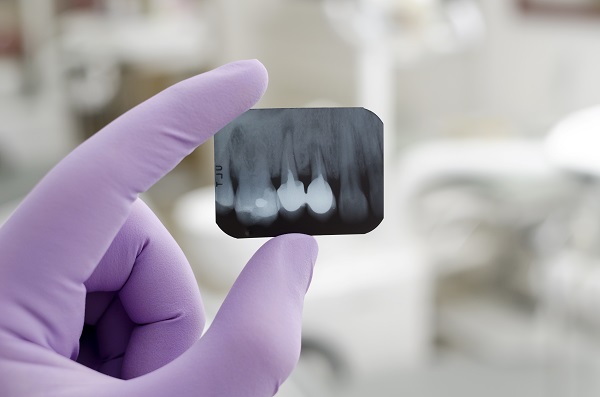Digital X-Rays and Radiation

Digital x-rays reduce your exposure to radiation by up to 80% compared to traditional ones. X-rays are an essential diagnostic tool dentists use to examine the insides of a tooth, gum tissues, and the bone structures in the mouth.
Getting a digital x-ray is a non-invasive procedure that does not cause any pain. It quickly produces the images needed to address the patient’s mouth, eliminating the need for multiple visits or waiting for results.
X-rays have been used in dentistry for over a century. Traditional x-rays involve using a film to capture images of the patient’s internal structures. It often took hours to process the film and get the results back. Digital technology has made the process a lot smoother and more affordable. The fact it lowers the patient’s exposure to radiation is a nice bonus.
While traditional x-rays leave patients exposed to more radiation, it should be noted that the levels of radiation patients are exposed to are less than what sunlight exposes them to daily. It is a negligible amount of radiation, but less is viewed as better since radiation is bad for the body.
How digital x-rays help to keep your mouth healthy
The process of getting digital x-rays usually involves wearing a large lead blanket or apron that shields the rest of your body from radiation. An x-ray sensor is then placed in the patient’s mouth to take digital images of the patient’s internal structures.
The type of sensor used varies depending on the type of x-ray being performed. These sensors typically do not cause any discomfort, but they can trigger some people’s gag reflex. Children are more likely to feel uncomfortable when x-rays are taken due to their smaller mouths and stronger gag reflex. Patients with sensitive gag reflexes should let their dentist know so accommodations like using smaller sensors can be made.
Some of the commonly used types of x-rays in dentistry include:
- Bitewing x-rays: These are typically taken once a year to detect cavities inside and between teeth. It can also be used to evaluate the bone structures that hold teeth in place
- Periapical x rays: Also known as PAs, these are used to get a complete picture of a tooth’s internal structures from its roots to the top of its crown. They are typically recommended when a patient complains of symptoms that originate from a specific tooth. PAs can be used to detect deep decay, damage to bone structures around a tooth, and abscesses
- Occlusal x rays: These are used to examine the internal structures of the floor or roof of a patient’s mouth. They can be used to detect tumors, jaw abnormalities, impacted teeth, and supplemental teeth
- Panoramic x rays: These are recommended every three to five years to paint a complete picture of a patient’s mouth. They are used to prepare for surgical procedures or orthodontic devices
Digital x-rays are safe
Digital x-rays help to evaluate the internal structures in your mouth. Call or stop by our Reston clinic to learn more about how digital x-rays work.
Request an appointment here: https://www.orthodonticprecision.com or call Precision Orthodontics & Pediatric Dentistry at (703) 391-8800 for an appointment in our Reston office.
Check out what others are saying about our dental services on Yelp: Digital X-Rays in Reston, VA.
Recent Posts
Understanding the dental issues your pediatric dentist can treat will give you peace of mind. Children tend to be prone to falls and bumps. They are fond of sweets, and their teeth are still developing. Catching and treating pediatric dental issues early is important for your child’s dental health. If you want to know the…
Seeing your pediatric dentist before your baby’s first tooth erupts will help you prepare for that special moment. The changes you will face may be overwhelming at first, but you and your baby will surpass them. You must know what you can about your baby’s first tooth. If you want to find out about the…
Two of the most common pediatric dental treatments for cavities are fillings and crowns. Both dental fillings and dental crowns offer unique benefits, but one may be preferable to another depending on the specifics of the cavity needing treatment. This review discusses why a pediatric dental professional opts for either a filling or a crown.…
Our pediatric dentist says you can start using fluoride toothpaste to clean your baby’s teeth as soon as they start to erupt. Developing good oral hygiene habits early in a child’s life can help them to avoid oral health issues like tooth decay.Tooth decay is the leading dental issue that affects children, and acids made…


